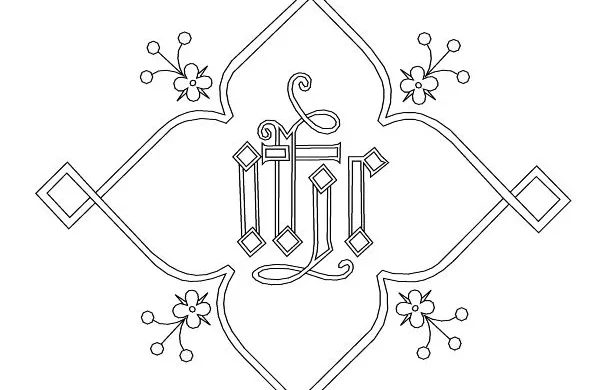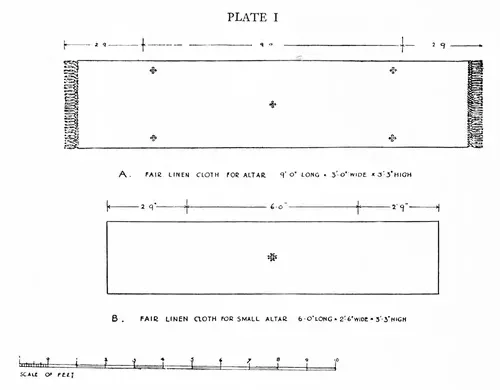
Merge three vintage Ecclesiastical Embroidery Designs into a versatile artwork. The simple lines make it ideal for whitework, but it seamlessly transitions for gold and silk Ecclesiastical Embroidery. For whitework, consider stitches like stem stitch, outline stitch, and padded satin stitch for letters. Alternatively, use outline stitch with seed stitch fill. Chainstitch is another excellent choice for whitework in Ecclesiastical Embroidery.
Like this:
Like Loading...

Fair linens, the top linen placed on the altar, are crucial liturgical items. According to Percy Dearmer, a renowned liturgical furnishing author, fair linens should be the exact width of the altar and extend within six inches from the ground on the sides. The linen should be good quality, hemmed, and bear one, four, or five devices in white, red, or blue. Modern recommendations suggest the fair linen’s length should match the superfrontal’s, often 9 to 12 inches. Working with 100% linen, mitering corners, and adding crosses can create a durable, elegant fair linen for the altar.
Like this:
Like Loading...



You must be logged in to post a comment.